Although many people know about the existence of hanpen, many people do not eat it every day. This dish tends to play a supporting role, it is actually a good source of protein. Therefore, why not trying cooking it at home following our recipe below?! In this article, we are also going to explain hanpen’s history, the meaning of its name and various types from different ingredients.
What is Hanpen?
Hanpen is a Japanese fish cake prepared with white fish surimi (Alaska Pollock), salt, and kombu dashi with biding agent shredded Japanese yam (yamaimo or nagaimo). It is a healthy fish protein ingredient and goes well with various cooking methods, whether locals baked, fried, or boiled them. Originally, locals ate this only in Kanto and other surrounding area and had strong local influence. In addition to the main ingredient, Japanese locals utilised white fish paste, egg whites, yams, salt, and spices. There’s a fluffy secret there. This is because it is aerated, just like ice cream, then they added frothy egg whites and yams.
Etymology
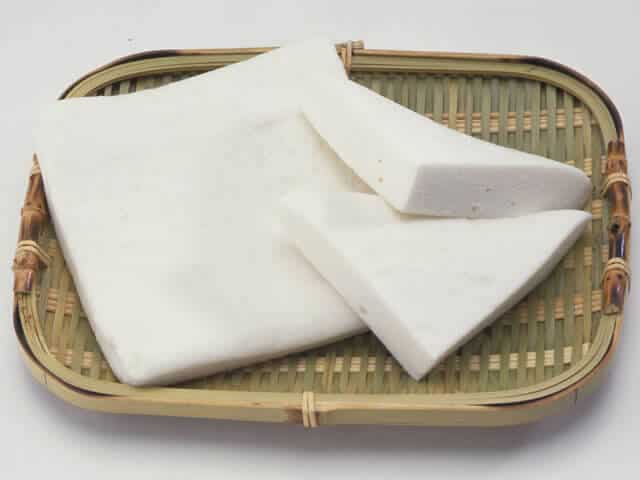
According to popular belief, the name was inspired by Suruga chef Hanpei. There are several more theories, such as the fact that the bowl cover was formed into a half-moon shape, hence the name. . In kanji, Japanese wrote it as ‘hankata (åŠç‰‡)’ or ‘hanpei (åŠå¹³)’, but it is sometimes written as ‘hanben (åŠå¼)’ or ‘hamochi (鱧餅)’.
Hanpen History
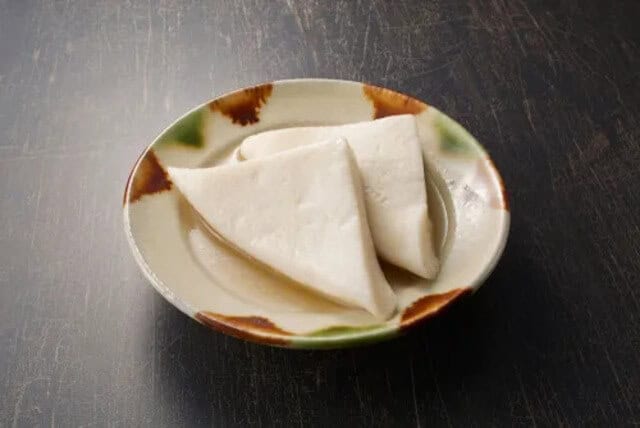
There are numerous theories concerning the origin of hanpen, although there are mentions of hanpen in Muromachi period recipes such as ‘Unpo Irohashu’ and ‘Konko Seasoning Collection.’ Hanpen also appeared in Edo period cookbooks such as “Tofu Hyakuchin” and “Kokuhaku Seimishu.” Hanpen may be seen in Muromachi period recipes such as Unpo Iroha Shu (1548) and Konko Seasoning Collection (1580) (from Wataru Shimizu’s Kamaboko History). According to legend, the name hanpen was coined by a guy named Zenbu Hanpei of Sunpu.
Hanpen Recipe
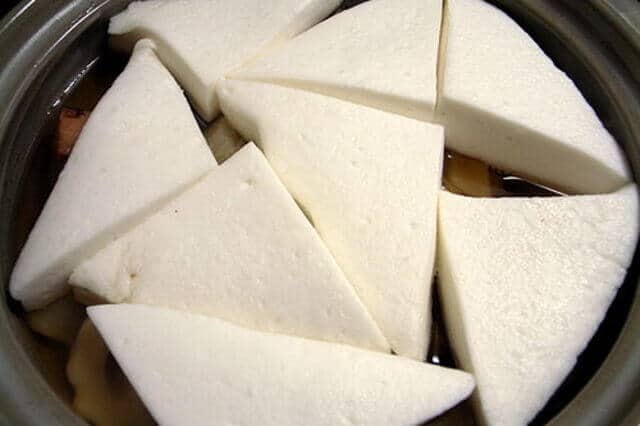
Hanpen Ingredients
| Ingredients of Hanpen for 1 person | Measurements |
|---|---|
| Raw cod | 150g |
| Tsukune sweet potato | 30g |
| Egg white | 23g |
| Sugar | 5g |
| Sweet sake | 7g |
| Salt | 2g |
How to make Hanpen
Remove the skin and bones from the cod and cut them into small pieces. Place the cut cod meat in ice water, stir gently, and let stand for 5 minutes. After 5 minutes, discard the water, put it in ice water again, stir gently, and leave it for 5 minutes again.
If you have a food processor, run the cod through the food processor for about 1 minute to 1 minute and 30 seconds. Grind in a mortar for about 15 minutes until creamy.
Add the egg whites, sugar, and mirin, and grind for another 15 minutes. Then, add the yamatoimo and grind for another 15 minutes. Finally, add salt and grind for about 15 minutes.
By straining the inside, the streaks and skin can be removed cleanly. Then, put surimi in a container made of cooking paper. Fill a pot with plenty of water and boil for 15 minutes.
After 2-3 minutes after flipping, remove the paper mold. After boiling, place it on kitchen paper to drain the moisture and let it cool.
If you don’t mind the shape, you can just put the minced meat on the parchment paper and put it into the hot water.
What kind of fish is in Hanpen?
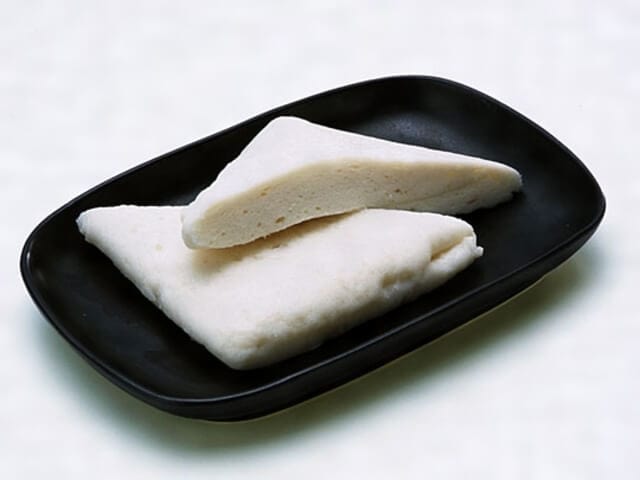
The main ingredient of hanpen is white fish. Alaska pollock, redfin bream, golden threadfin bream, etc. Locals also used blue sharks, lotus bream, and giant black marlin. Thus, hanpen is made from fish protein. Japanese used the frozen surimi technology developed in Japan in ships and onshore factories around the world.
Hanpen as an ingredient on Oden
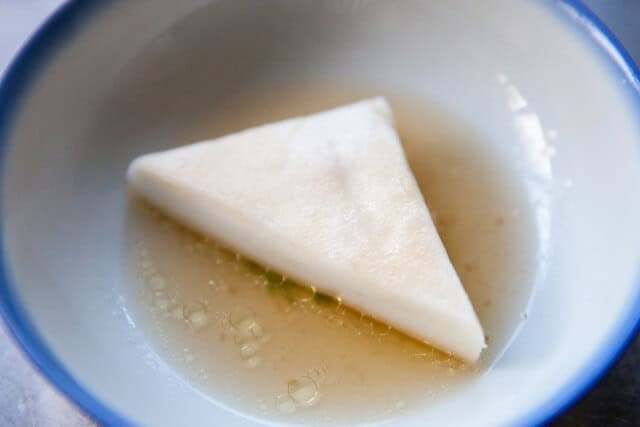
“Hanpen” has an irresistibly soft and fluffy texture. Even if it swells up as it absorbs the juice of the oden, it melts in your mouth and disappears quickly. The gentle taste without the habit is very popular among small children to the elderly. If the hanpen is overcooked, it may swell too much or fall apart, so locals recommended to add it just before eating the oden.
Why is hanpen white?
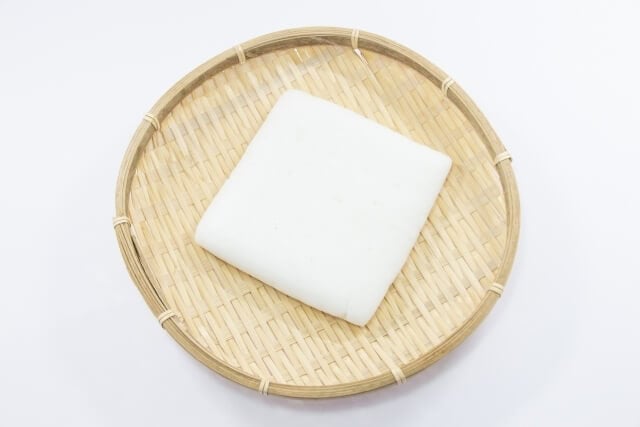
Locals added some egg whites and yam to the white fish, and they stirred the mixture at a high speed to trap air, which diffuses the light and makes it appear white.
Types of Hanpen

Floating hanpen type
A paste that originated in the Kanto region. White, square or hump-shaped hanpen with a fluffy and soft texture. Locals classify as a ‘floating hanpen’ because they boiled it in boiling water.
Plum flower hanpen type
A specialty of Kanagawa. The red and white hanpen is shaped like a plum blossom and has a chewy yet soft texture.
Black hanpen type
A specialty of the Shizuoka/Chubu region. Made from sardines and mackerel, this hanpen is grayish white, half-moon shaped, and has a firm texture. Famous for Shizuoka oden.
White hanpen (Shizuoka/Western) type
A specialty of Shizuoka and the western part. A paste made by steaming. Many of them are white and oval with four stripes, and they have a firm texture.
Satsuma-age type
A paste made by frying surimi. Locals often called it ‘Eastern Japan = satsuma-age‘ and ‘West Japan = tempura’, and ‘Aichi/Gifu = hanpen’ and ‘Kagoshima = tsukeage’ are also here and there, and they differ throughout the country.
Difference between hanpen, and chikuwa, kamaboko
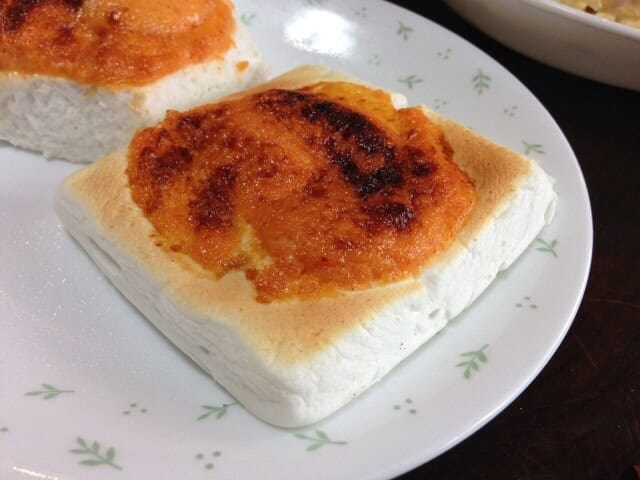
Kamaboko and Chikuwa
Kamaboko has a similar texture to chikuwa, although it has the same ingredients. Chikuwa is grilled surimi, and kamaboko is steaming surimi on a dish. Kamaboko has a longer history, and locals thought that the name chikuwa distinguish it from the many forms of kamaboko.
Hanpen and Chikuwa
The main ingredients of hanpen and chikuwa are the same as fish paste, but the secondary ingredients are different. Most of the fish such as hanpen and chikuwa are white-fleshed fish, the texture and taste of the fish are unique. Both hanpen and chikuwa use the fish paste as the main ingredient, but locals make hanpen by mixing the fish paste with yam and egg whites and boiling the mixture. On the other hand, they make chikuwa by adding starch to fish paste, kneading it, wrapping it around an iron or bamboo stick, and grilling it. Yamaimo and egg white are essential ingredients for the unique fluffy texture of the hanpen. While Chikuwa uses ingredients like mirin and vegetable oil. Locals used them in chikuwa contains a lot of trans fatty acids. It has been pointed out that taking too much trans fatty acid increases the risk of heart disease
Where to buy Hanpen
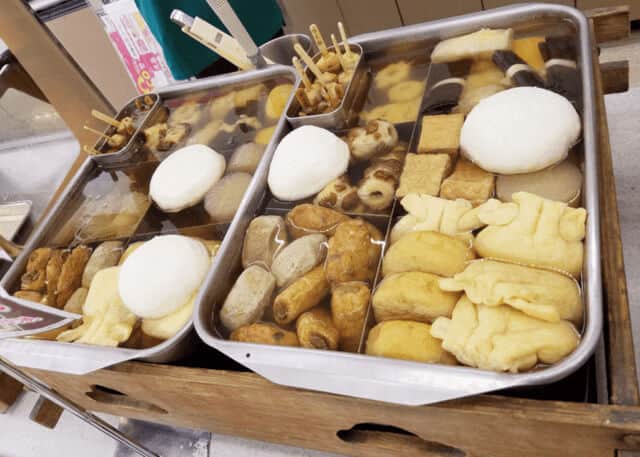
Normally, Japanese can find hanpen at an oden store and every convenience store have it. So, here are some of the recommended stores and restaurants to try it from.
Direct factory store
Uoshu Factory Store (éšå·žå·¥å ´ç›´å£²æ‰€)
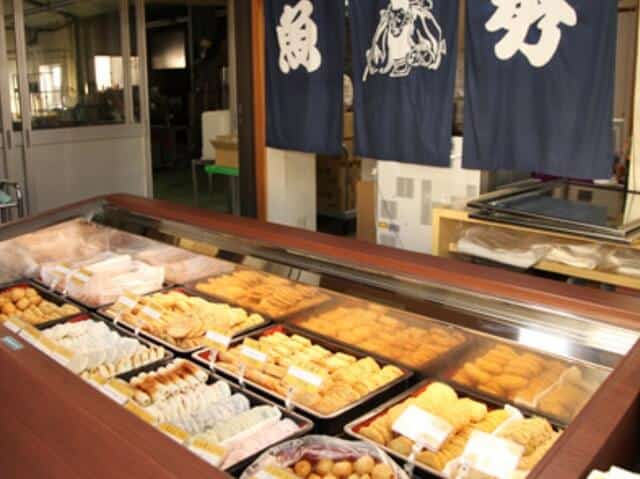
At the store attached to our factory, we sell our recommended products such as freshly made hanpen every day. Furthermore, at the factory direct sales store, we also have our original products that are not wholesaled in supermarkets.
Nerimonoya Marumata ((æ ªï¼‰ä¸¸åˆ)
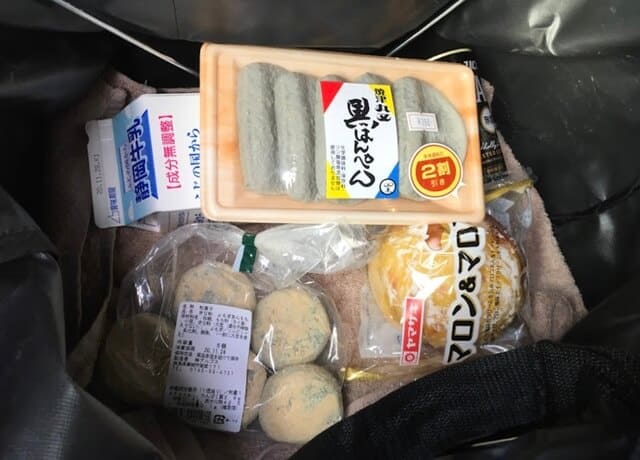
This factory store sells sardine hanpen, fish hamburger steak, deep-fried food, and kneaded products such as chikuwa, etc. Among them, “sardine hanpen” uses only natural seasonings to bring out the flavor of the ingredients, “hanpen hamburger” and “small fish hamburger with tuna” that use okra, and “salami flavor” that is perfect for beer snacks.
Restaurants
Konakara (ã“ãªã‹ã‚‰æœ¬åº—)

This is where you can enjoy Kansai-style oden. The store is widely famous among oden lovers. During the colder months, the horigotatsu-style counter is bustling with customers happily drinking sake. The store serves oden with a clear, light, and flavorful broth, reflecting his long training experience in the Kansai region. In addition to standard ingredients such as radish, sardine fish cakes, and kombu seaweed, there are also original oden varieties such as homemade konnyaku with egg added for a crispy texture, and lotus root rice cakes.
Nakameguro (ä¸ç›®é»’店)

An oden specialty store that is popular for a long time under the Nakameguro elevated railway that renewed in 2016. The rich and umami-filled [Chicken Dashi Oden], which is simmered in Tottori’s brand chicken, Daisen-dori dashi, is very popular. Classic [Daikon], [Specially Selected Chicken Skewered Oden] skewered and stewed like yakitori, [Tokyo Fried] with a cheese-like texture, and yolk the [Nagoya Cochin soft-boiled egg] that melts in a thick consistency and the flavorful oden are all excellent.
Oden Kappo Hide (ãŠã§ã‚“割烹 ã²ã§)
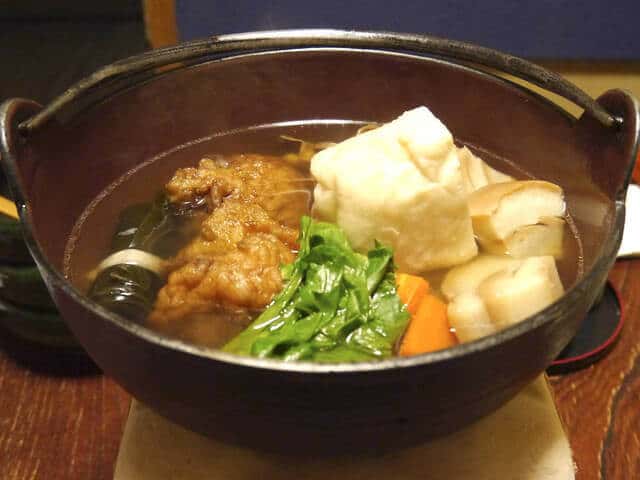
A well-known restaurant with a relaxed atmosphere. While immersing yourself in the atmosphere of the geisha district, you can savor Kansai-style oden, Japanese cuisine, and course meals prepared by a Japanese chef. About 50 types of oden are the pride of this restaurant. They use kombu (kelp) and bonito flakes for the soup stock, and the seasoning is very simple with only salt and soy sauce. Their soup stock comes out of the ingredients and creates a deep flavor.
Final Thoughts
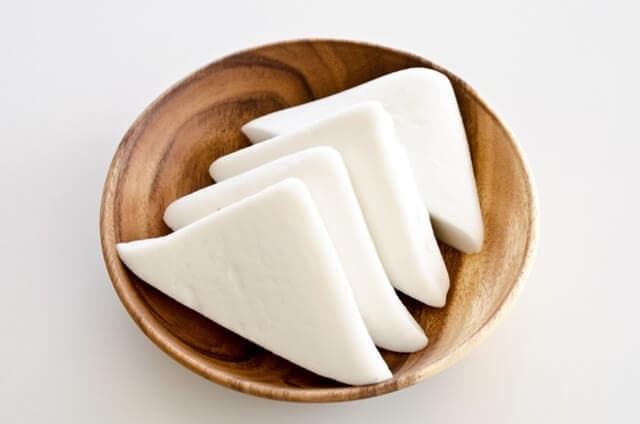
A traditional Japanese diet and Japanese food products are widely popular to be healthy, contributing to longevity and preventing various non-communicable diseases. Hanpen is a traditional type of Japanese food made from minced fish as well as imitation crab and kamaboko, and a marshmallow-like soft texture is characteristic of hanpen. Known as a high-protein and low-fat food. Hanpen is easy to eat in comparison with raw fish, which contains skeletal bone and fish guts and is beneficial to human health.
There are other related Japanese food products to Hanpen, like Oden, Kamaboko, Chikuwa, and Satsuma Age.




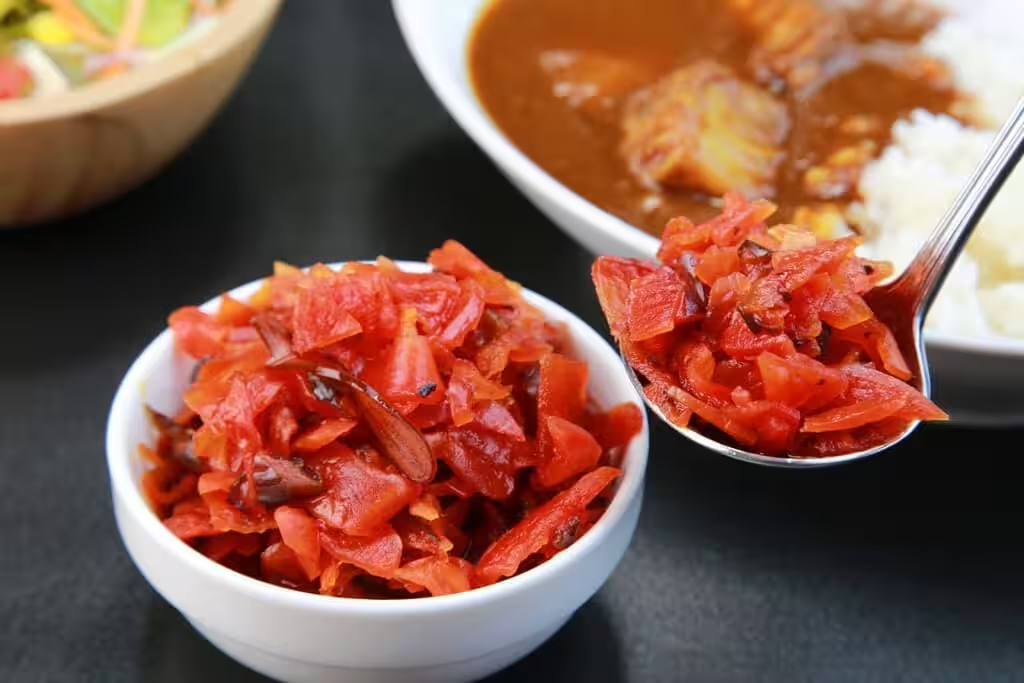

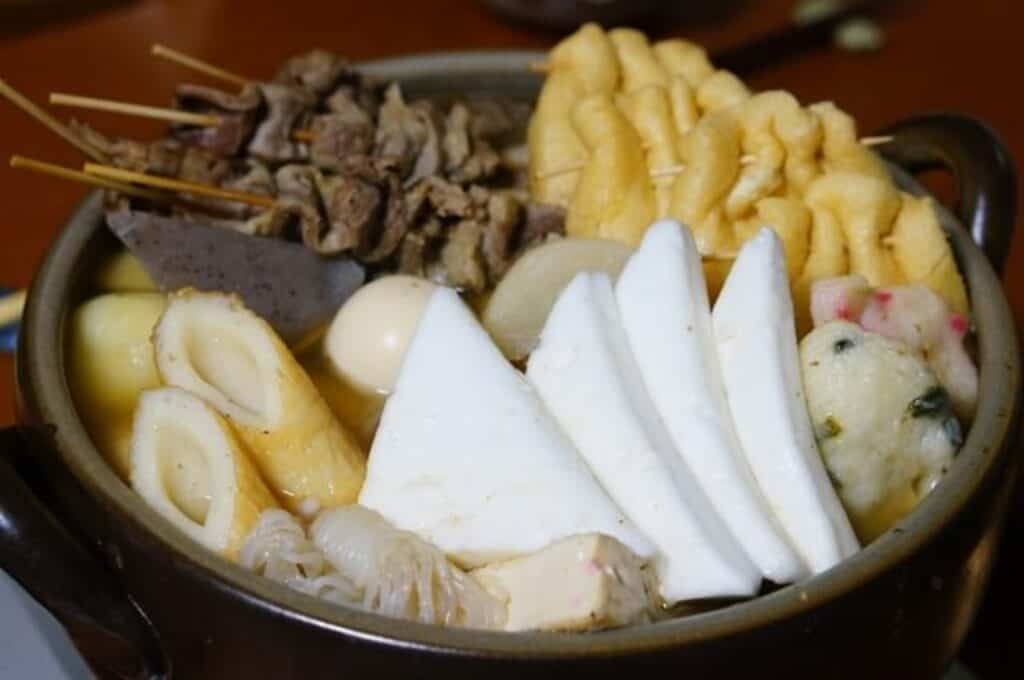
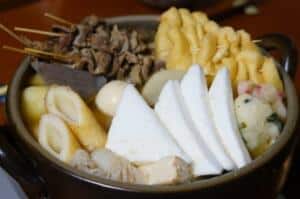
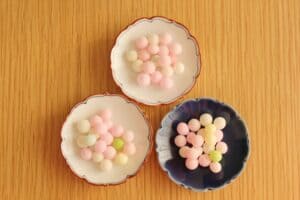
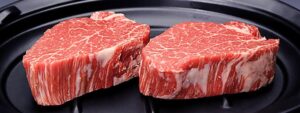
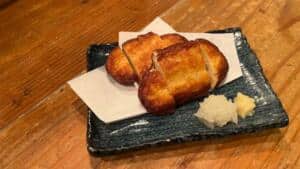
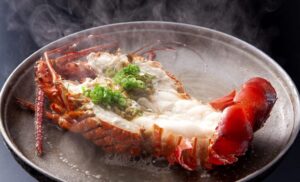
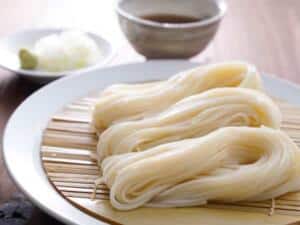
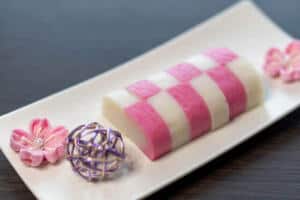
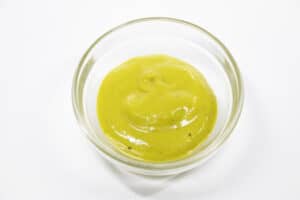
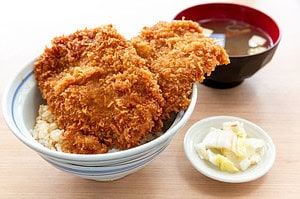
Comments